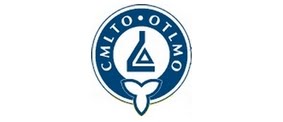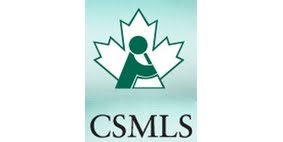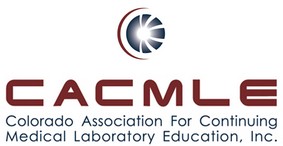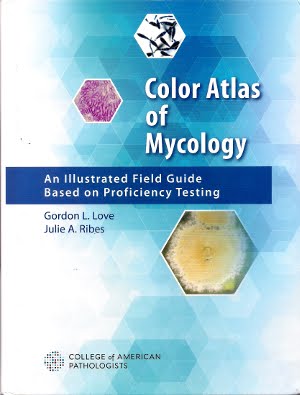Sunday, 14 June 2015
Sepedonium species
Sepedonium species
Ecology:
Sepedonium
species are cosmopolitan saprobes commonly found in temperate soils worldwide.
Pathogenicity:
Sepedonium species are considered to
be of low virulence with only three possible cases cited in the
literature. No animal infections are
known. When isolated, they are generally considered to be a contaminant. As with any fungus, they may be opportunistic
particularly if the host is immunocompromised.
They are a known parasite of higher basidiomycetes,
particularly Bolotales (mushrooms).
Macroscopic Morphology:
Sepedonium
exhibits rapid growth at 25-30ᵒC.
Colonies initially appear white or creamy in colour with a rather waxy
texture. As the colony matures it
acquires a cottony to woolly texture and develops a golden yellow colour. A white to cream coloured fringe may
remain. The reverse is frequently
described as white or pale, however the isolate presented here has a bright
yellow reverse.
Sepedonium species on Saboraud-Dextrose agar (SAB) incubated at 30ᵒC for 5 days. (Nikon)
Sepedonium species on Saboraud-Dextrose agar (SAB) incubated at 30ᵒC for 10 days. (Nikon)
Hyaline hyphae are septate and may bear simple or
branched conidiophores. They show
minimal differentiation from the hyphae from which they arise. Immediately distinguishing features are the
rather large (7 – 17 µm) conidia produced at the apex of the conidiophore. Conidia are solitary, single-celled, globose
to ovoid in shape and have a rather thick, often echinulate or verrucose
(roughened) wall. A phialidic conidial (phialoconidia)
state that produces ellipsoidal or cylindrical, smooth walled conidia may
sometimes be present, particularly when the colony is young.
Notes on Photography:
Sepedonium offered a few photographic challenges with the techniques and photographic equipment I was using.
Slide vs Adhesive Tape Technique: Firstly, I like to take photographs using the slide culture technique as the glass cover slip, if possible, as it offers better transparency than does adhesive tape technique. The adhesive tape, unless attached to the glass microscope slide smoothly may give an uneven, wavy picture. The glue surface itself by be visible and deter from the quality of the photo. The again, on some moulds, the sticky tape surface preserves the delicate arrangement and keeps in place structures which might be dispersed when manipulating the cover slip from a slide culture. In the case of Sepedonium species, I found that this fungus adhered to the cover slip rather poorly. The photos below are from both slide and adhesive tape preparations. I have not stated which as it is the structure which is important.
Choice of camera: I find that both the DMD-108 digital imaging microscope and the Nikon Coolpix camera have advantages and disadvantages when photographing microorganisms. In the case of moulds, the DMD-108 sometimes tends to over-saturate the blue from the Lacto-phenol Cotton Blue (LPCB) dye and I have not been able to correct for this to my satisfaction at either the instrument itself or with any of several photo-manipulation computer programs. Structures (conidia below) may appear very dark and blotchy with details obliterated. The Nikon, paired with the Leica 2000 microscope I routinely use should produce excellent photos, however, even after proper maintenance by a professional service, I often find the quality lacking. What I find most distracting is the spherical aberration which appears as concentric light and dark lines running through the photograph. While these rings or ripples running through the image are not seen through the oculars, they are blatantly visible in the digital image, particularly at higher magnifications. A frosted filter between the light source and condenser minimizes this distracting `bulls-eye`pattern, however it is still present. It seems to me that the camera lens magnifies any defects in the microscope lens or that somehow they conflict even after Köhler illumination.
Here, as throughout this blog, I use whichever technique (or combination of) most efficiently captures the organisms characteristics.
Sepedonium species -edge of a slide culture at low magnification. Hyphae and conidia are visible but too small to show any useful detail for identification. (250X, LPCB, DMD-108)
Sepedonium species -Large echinulate or verrucose (rough-walled) conida very apparent.
(400X, LPCB, DMD-108)
Sepedonium species - another view, as above.
(400X, LPCB, DMD-108)
Sepedonium species - a phialidic conidial state which produces ellipsoidal or cylindrical, smooth walled conidia (phialoconidia) may sometimes be present, particularly when the colony is young. These forms are visible at the center of the photo extending to the left with the phialoconidia at the tips. (400X, LPCB, Nikon)
Sepedonium species - loose phialoconidia are seen throughout the photo as well as two large rough-walled conidia seen near upper center. (400X, LPCB, DMD-108)
Sepedonium species - single oval or ellipsoidal phialoconidium seen at the end of a conidiophore, with a few loose phialoconidia at upper center. (1000X, LPCB, DMD-108)
Sepedonium species -and another view of the phialoconidia in the center of the photo and the relationship in size to the rough conidium seen at the center-left of the photo.
(1000X, LPCB, DMD-108)
Sepedonium species -another view, as above.
(1000X, LPCB, DMD-108)
Sepedonium species - large, young, still rather smooth, conidium at the apex of the conidiophore. Two free phialoconida seen at upper left. (1000X, LPCB. DMD-108)
Sepedonium species - two large roughly textured conidia seen with their conidiophores receding out of the focal range of the camera. The conidia have a rough surface texture which is described by various texts as warty, tuberculate, echinulate or verrucose. It is this feature which may initially confuse this non-virulent mould with the highly virulent Histoplasma capsulatum.
(1000X, LPCB, DMD-108)
Sepedonium species -large, still rather smooth, conidium seen at the end of its conidiophore. The thick wall of the conidia can be readily seen in this photo.
(1000X, LPCB, DMD-108)
Sepedonium species - long conidiophore with a large, rough-walled conidium at the apex.
(400+10X, LPCB, DMD-108)
Sepedonium species - single rough-walled conidium seen in center of photo.
(400+10X, LPCB, DMD-108)
Sepedonium species - conidia attached to conidiophores of varying length. Insert is just an alternate focus of conidiophore & conidium. Distinctive, septate hyphae seen.
(400+10X, LPCB, DMD-108)
Sepedonium species - large (7 – 17 µm), rough-walled conidium seen.
(1000X, LPCB, DMD-108)
Sepedonium species - a number of large, rough-walled conidia taken from a mature colony. This is from an adhesive tape mount. (1000X, LPCB, DMD-108)
Sepedonium species - numerous rough-walled conidia.
(400+10X, LPCB, DMD-108)
Sepedonium species - as above. Conidia are in different planes of focus and therefore the rough texture often appears different on different conidia.
(1000X, LPCB, DMD-108)
Sepedonium species - large conidia still attached to their conidiophores. Rough, tuberculate surface evident.
(1000+10X, LPCB, DMD-108)
Sepedonium species - perhaps the most dramatic of the photos showing the rough & thick-walled conidia.
(1000+10X, LPCB, DMD-108)
Sepedonium species - suitable for framing.
(1000+10X, LPCB, DMD-108)
Sepedonium species - rough & thick-walle conidium attached to what appears to be a short conidiophore.
(1000+10X, LPCB, DMD-108)
Sepedonium species
(1000X, LPCB, DMD-108)
Sepedonium species - conidium still attached to a segment of it`s conidiphore.
(Cropped photo, LPCB, Nikon)
Notes:
One source states that Sepedonium may grow poorly if at all at 37ᵒC. Caution: not a definitive test.
Differentiation from other
moulds:
Sepedonium
superficially resembles the highly pathogenic mould Histoplasma capsulatum.
·
Growth rate – Sepedonium exhibits rapid growth
at 25 - 30ᵒC and may be fully mature after one week while Histoplasma capsulatum grows slowly and may be barely visible after a week’s incubation
·
Sepedonium
species are inhibited by cycloheximide and therefore will not grow on Mycosel®
or Dermasel® selective media.
·
Sepedonium
is not a dimorphic fungus (yeast & mould phase) and will not convert to a
yeast phase at 37ᵒC as would Histoplasma.
·
Histoplasma
capsulatum –specific GenProbe molecular testing. Sepedonium negative.
·
Sepedonium
species can be distinguished from Chrysosporium
species by its conidia’s tuberculate* (echinulate or verrucose) cell wall.
*all terms are descriptions
of the rough cell wall.
* * *




























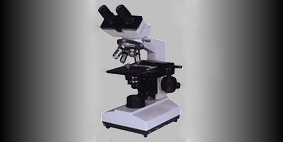.jpg)
